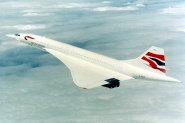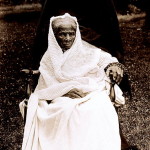
Concorde
Concorde flew for the first time in 1976. A British company and a French company formed a joint cooperation to fund and build 20 Concorde planes. The planes mainly flew from London and Paris to New York and Washington, DC. Flights were expensive, but passengers arrived at their destinations in less than half the usual flight time. Due to less travel after September 11, 2001, and increased costs, the planes were retired on November 26, 2003.
 Harriet Tubman Day is today! President George H. W. Bush proclaimed the day in 1990. Harriet Tubman died in Auburn, New York, on this day in 1913. Her exact date of birth is unknown. She was born around 1820 in Dorchester County, Maryland. A slave, she escaped to Philadelphia in 1849. She then became the most famous conductor for the Underground Railroad, probably saving about 900 people. During the Civil War, she acted as a spy and a scout. After the war, she cared for orphans and the aged. Children may want to read Before She Was Harriet, written by Lesa Cline-Ransome and illustrated by James E Ransome. He received a 2018 Coretta Scott King Illustrator Honor Award for the book. Children could also learn more about her life at:
Harriet Tubman Day is today! President George H. W. Bush proclaimed the day in 1990. Harriet Tubman died in Auburn, New York, on this day in 1913. Her exact date of birth is unknown. She was born around 1820 in Dorchester County, Maryland. A slave, she escaped to Philadelphia in 1849. She then became the most famous conductor for the Underground Railroad, probably saving about 900 people. During the Civil War, she acted as a spy and a scout. After the war, she cared for orphans and the aged. Children may want to read Before She Was Harriet, written by Lesa Cline-Ransome and illustrated by James E Ransome. He received a 2018 Coretta Scott King Illustrator Honor Award for the book. Children could also learn more about her life at: 

